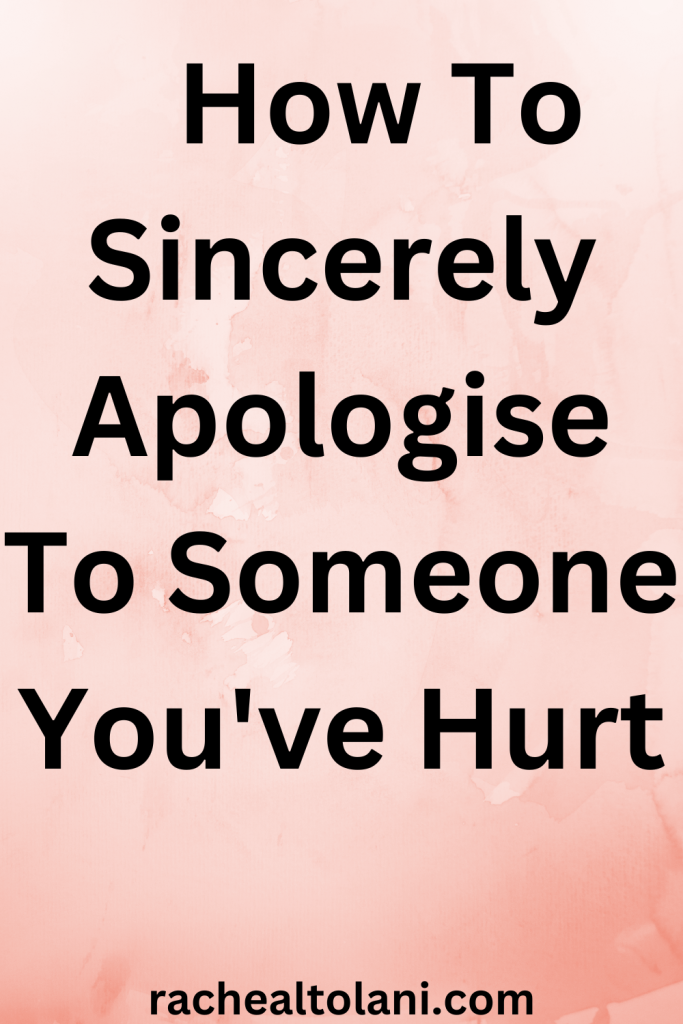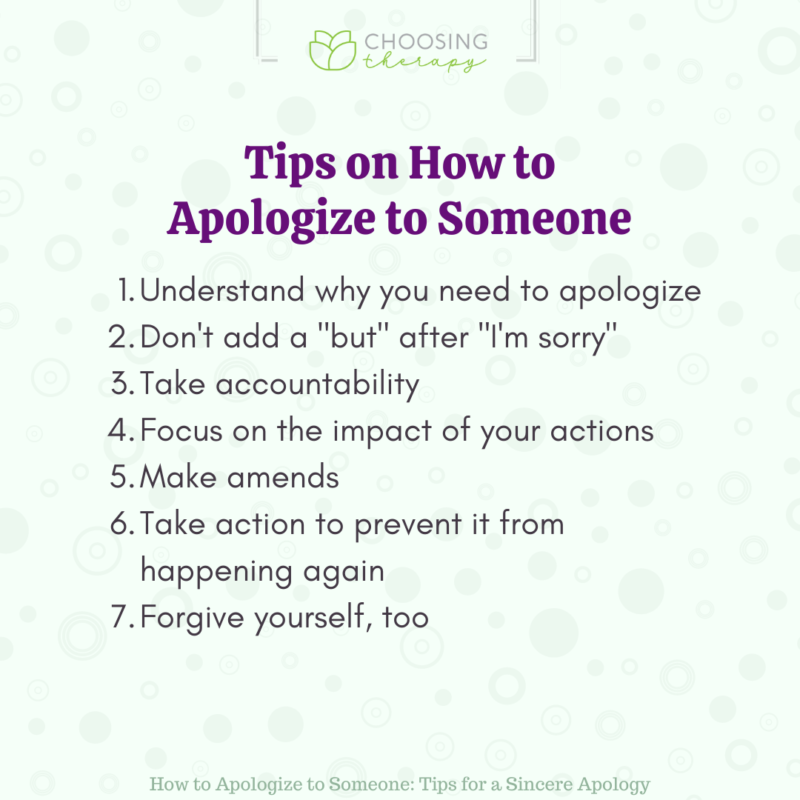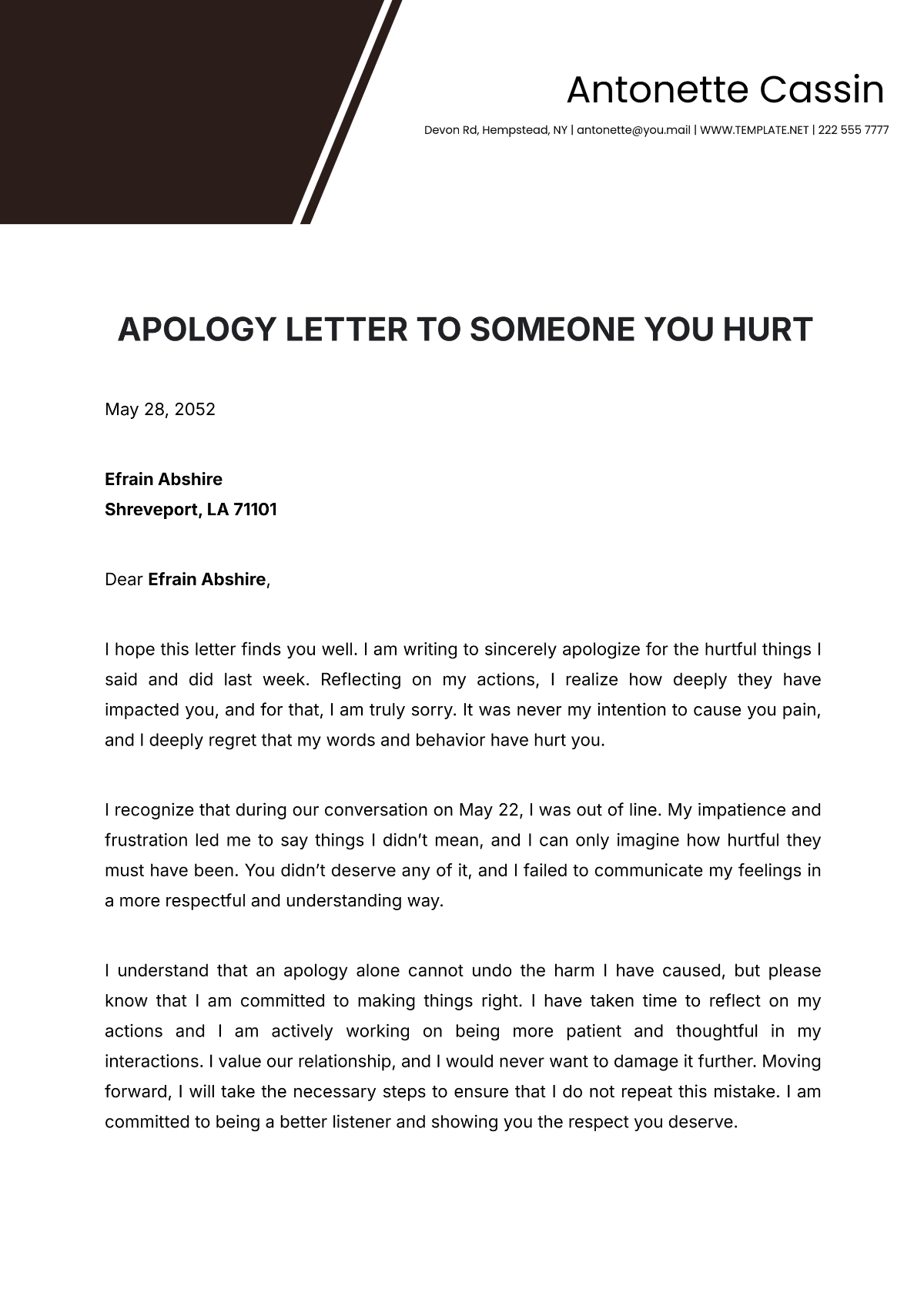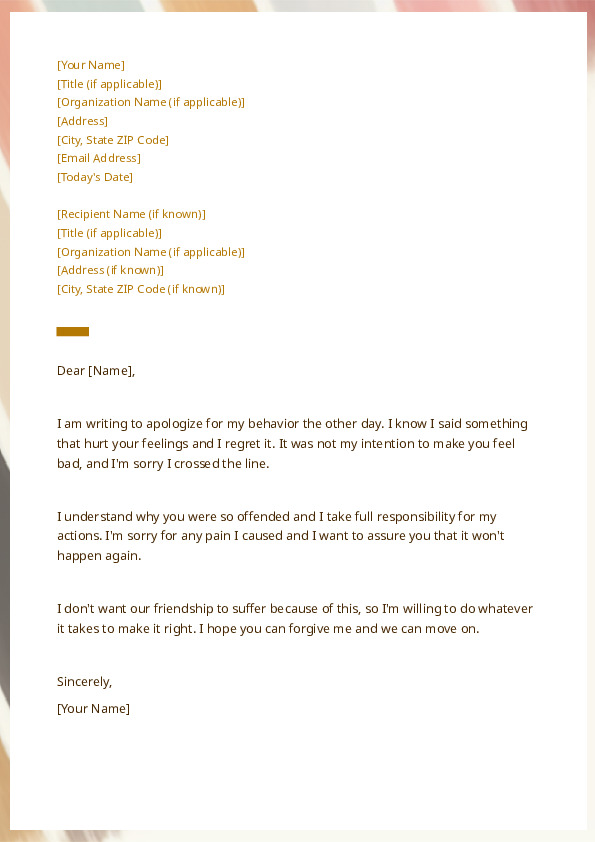How To Apologize To Someone You Hurt Unintentionally

Navigating social interactions can be complex, and unintentionally hurting someone is a common experience. Knowing how to effectively apologize is crucial for repairing relationships and fostering understanding. Experts emphasize that a sincere apology goes beyond simply saying "I'm sorry;" it requires empathy, accountability, and a commitment to change.
A well-delivered apology can mend hurt feelings, rebuild trust, and strengthen bonds. Conversely, a poorly executed apology can exacerbate the situation and further damage the relationship. This article explores the key elements of a sincere apology and provides practical guidance on how to apologize effectively when you've unintentionally caused harm.
Understanding the Impact
Before apologizing, it's essential to understand the impact of your actions. Take time to reflect on what happened and how the other person might have perceived the situation. Consider their perspective and try to empathize with their feelings.
Avoid minimizing their feelings or dismissing their reaction. Acknowledging the validity of their emotions is a crucial first step.
Key Elements of a Sincere Apology
1. Express Remorse:
Begin by clearly expressing your remorse. Use phrases like "I'm sorry," "I regret," or "I feel bad that I..." State your regret sincerely and specifically.
Avoid using conditional phrases like "I'm sorry if you were offended." This places the responsibility on the other person and undermines the sincerity of your apology.
2. Acknowledge Responsibility:
Take full responsibility for your actions without making excuses or blaming others. Use "I" statements to own your behavior. For instance, say "I made a mistake" rather than "Mistakes were made."
Dr. Harriet Lerner, a renowned psychologist and author, emphasizes the importance of accountability in her work on apologies. "A good apology requires taking responsibility for our actions and acknowledging the impact they had on the other person," she writes.
3. Explain (Briefly) - Without Excuses:
Briefly explain your actions without making excuses or trying to justify your behavior. The goal is to provide context, not to deflect blame. Keep it concise and focus on your intentions, if they were misunderstood.
Avoid getting defensive or offering explanations that sound like justifications. The focus should remain on acknowledging the hurt you caused.
4. Offer Restitution:
If possible, offer to make amends or repair the damage caused. This could involve offering practical assistance, changing your behavior, or taking steps to prevent similar incidents in the future. This shows genuine intent to learn and do better.
However, be mindful that offering restitution should be driven by genuine willingness to help, not by a need to feel absolved of guilt.
5. Promise to Change:
Express a commitment to changing your behavior in the future. Explain how you will avoid repeating the same mistake. This demonstrates that you have learned from the experience and are willing to grow.
A promise to change should be specific and realistic. Avoid making vague promises that you cannot keep.
Delivering the Apology
Choose the right time and place to deliver your apology. A private, face-to-face conversation is often the most effective approach. If that's not possible, a phone call or a handwritten letter can also be appropriate.
Be patient and allow the other person time to process your apology. They may need time to forgive you or to express their feelings. Listen actively and validate their experience.
Avoid interrupting or getting defensive. Give them the space they need to heal.
"The best apology is changed behavior," says an often-quoted proverb.
What Not To Do
Avoid these common apology pitfalls: Minimizing the other person's feelings, making excuses for your behavior, demanding immediate forgiveness, and expecting them to apologize to you.
These actions can undermine your apology and further damage the relationship.
Conclusion
A sincere apology is a powerful tool for repairing relationships and fostering understanding. By expressing remorse, taking responsibility, offering restitution, and promising to change, you can demonstrate your commitment to healing the hurt you caused. Be patient, empathetic, and genuine in your efforts.
Mastering the art of apology not only strengthens relationships, but also cultivates personal growth and emotional intelligence. It allows us to navigate the complexities of human interaction with greater grace and understanding.













![How To Apologize To Someone You Hurt Unintentionally 110 Apology Messages To My Love [Heartfelt & Emotional]](https://prayerfulvibes.com/wp-content/uploads/2025/02/Samples-of-How-To-Apologize-For-Hurting-Someone-You-Love-Sincerely-1-1024x536.webp)




